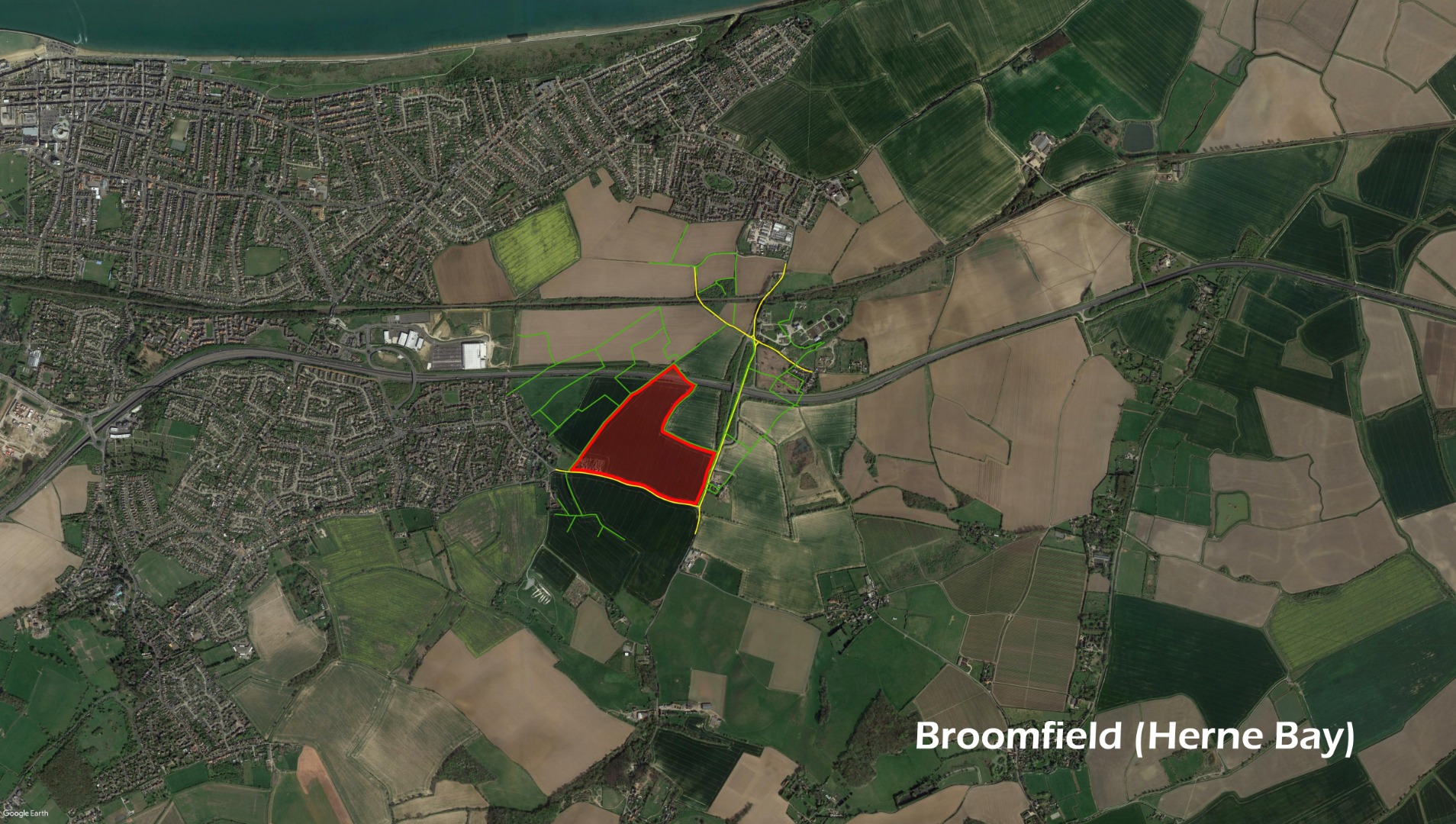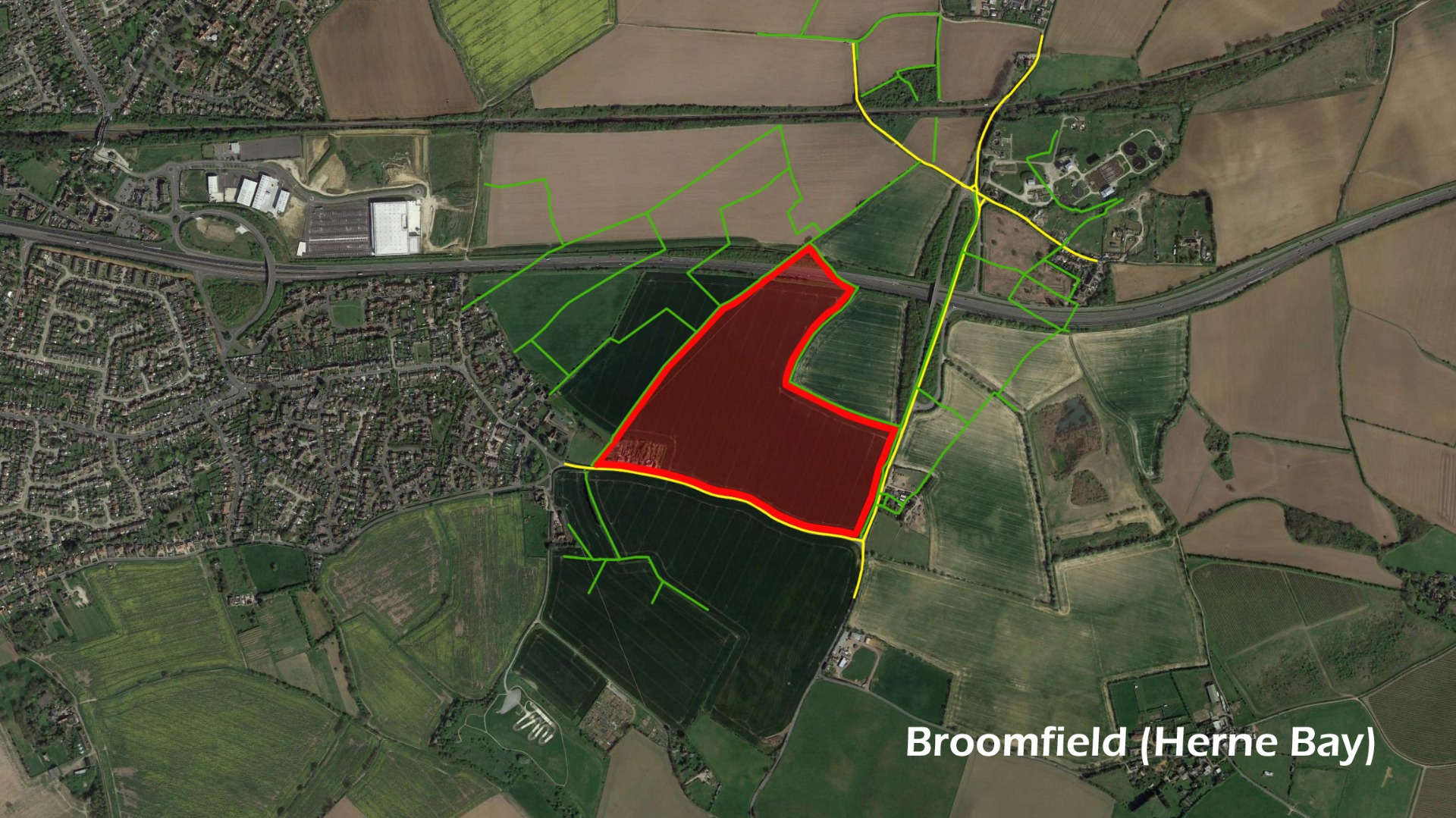Airfield search
Broomfield, Kent

| Also known as: | Broomfield Landing Ground / RAF Broomfield / RFC Broomfield / Herne Bay |
| County: | Kent |
| Current Status: | Farmland |
| Date: | December 1916 (earliest known date) - circa April 1922 |
| Current Use: | Disused |
| Used By: | RAF (main user) / RFC (main user) / Civil |
| Landing Surface Type(s): | Unpaved |
| Aircraft Role(s): | Fighter / General aviation |
Various fighter types of No 50 Squadron initially had Broomfield near Herne Bay in Kent available to them as a Home Defence landing ground during World War One. The unit eventually switched to using Sopwith Camels in early 1918, before changing equipment again at the Armistice of November 1918 to subsequently operate Royal Aircraft Factory SE5a fighters.
Broomfield was notified for relinquishment in the early summer of 1919 but soon made a comeback the following September as a licensed List D2 Avro 504K civil airfield. Stallard Airways subsequently employed this place on an irregular but official basis for joy-riding duties until 1922, while one of Sir Alan Cobham’s National Aviation Day flying displays appeared in 1932.
The following organisations are either based at, use and/or have at least potentially significant connections with the airfield (as at 01/09/2011):
- Herne & Broomfield Local History Group
- Herne & Broomfield Parish Council
- Herne Bay Library
Main unit(s) present:
- No 50 Sqn
- Stallard Airways


Plans of Broomfield. Courtesy of Ed Andrews
| Parent(s)/HQ Airfield(s): | |
| Home Defence Flight Station(s): |

